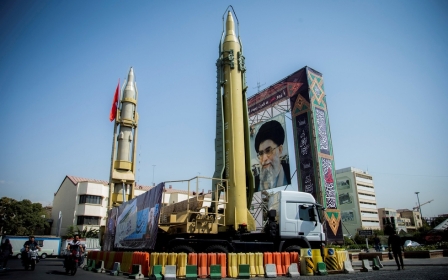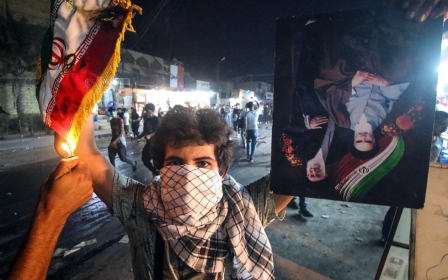The Ahvaz terror attack in Iran may drag the US into a larger war

Iran has been hit by yet another terrorist attack. At least 29 people were killed in the southwestern city of Ahvaz when gunmen opened fire on a crowd watching a military parade on Iran's equivalent of Memorial Day. But unlike previous terror attacks, this one may spark a much larger regional conflagration - involving not just regional rivals Saudi Arabia and Iran, but also the United States. In fact, it may have been designed to trigger just that.
The terrorist attack, which was first claimed by an Arab separatist group with alleged connections to Saudi Arabia, the Ahvaz National Resistance, did not occur in a vacuum. Iran's regional rivals, particularly Saudi Arabia and the UAE, have increasingly taken their decades-long behind-the-scenes pressure on the US to bomb Iran into the open.
What used to be said in private is now increasingly declared in public. Moreover, these monarchies are no longer limiting themselves to pushing the US to take military action, but are announcing their own readiness to attack Iran.
Saudi and UAE threats towards Iran
Only a year ago, Saudi Crown Prince Mohammed bin Salman explained in an interview that Saudi Arabia would take the fight to "inside Iran".
"We won't wait for the battle to be in Saudi Arabia," he said. "Instead, we will work so that the battle is for them in Iran." His statement was widely interpreted as a sign that Riyadh would dramatically escalate tensions with Iran and intensify its support for various armed groups opposing the government in Tehran.
Abdulkhaleq Abdulla, an adviser to the Abu Dhabi government, justified the Ahvaz attack on Twitter, arguing that it wasn't a terrorist attack and that "moving the battle to the Iranian side is a declared option". Attacks of this kind, he ominously warned, "will increase during the next phase".
If the terrorist attack in Ahvaz was part of a larger Saudi and UAE escalation in Iran, their goal is likely to goad Iran to retaliate and then use Tehran's reaction to spark a larger war and force the US to enter since Riyadh and Abu Dhabi likely cannot take on Iran militarily alone (indeed, after spending roughly $6bn a month, they have failed to defeat the Houthi guerillas in Yemen).
If so, the terrorist attack is as much about trapping Iran into war as it is to trap the US into a war of choice. As former secretary of defense Bob Gates said in 2010, the Saudis "want to fight the Iranians to the last American".
Iran hawks inside Trump's administration
But the Trump administration may not be innocent bystanders to such a scheme. Trump's own actions and the close coordination we have seen between his administration, Saudi Arabia, UAE and Israel on Iran raises the prospects of a different explanation: one in which the US itself is actively pushing its allies and being pushed by its allies towards war with Iran.
The Ahvaz attack comes only one day after Secretary of State Mike Pompeo issued a strong threat to Iran, declaring it would be held "accountable" if there were any more attacks on US consulates in Iraq.
The US consulate in Basra, Iraq, has come under attack in the past week allegedly by Iraqi Shia forces close to Iran. The Trump administration has not presented any evidence that Iran had any involvement in that attack, but has declared that it will attack Iran if any more such attacks take place.
The Iranian consulate in Basra, in turn, has been attacked several times during this same period, with Tehran laying the blame at the feet of the US (also without clear evidence).
The difference being that the US has issued a stern threat declaring it will take action against Iran for events neither Washington nor Tehran can provide any evidence for.
This pattern of bellicose statements and actions fits well with a memo National Security Adviser John Bolton - who has a history of manipulating intelligence in order to drag the US into war - wrote in August 2017, before he joined the Trump team.
The memo details how the US should coordinate with Israel and Saudi Arabia to build support - domestically and internationally - for a withdrawal from the Iran nuclear deal and a much more aggressive policy on Iran.
It specifically mentions "providing assistance" to Khuzestan Arabs - the minority group in Iran that the Ahvazi attack perpetrators claim to represent. Bolton also argues that the Trump administration should demand payment from Iran for its non-existing role in the 9/11 September attacks while disingenuously offering Iran dialogue amid a policy of confrontation.
The Trump administration's Iran policy is following the Bolton memo almost point by point. The plea to provide assistance to Khuzestani separatists is particularly damning. This raises legitimate suspicions that if the terror attack has Saudi and UAE fingerprints on it, it may not be so much an attempt by them to drag the US into war as Trump operating in the driver’s seat.
For Saudi Arabia and the UAE, this makes strategic sense. Their ability to compete with the much larger and more cohesive Iranian state in the long run is highly questionable. If they can trap the US into doubling down on its military presence in the Middle East, however, then they can use American power to balance Iran.
For America, which is already overextended in the Middle East at the expense of its strategic interest in Asia as well as at home, this makes little to no sense.
- Trita Parsi is President Emeritus of the National Iranian American Council and author of Losing an Enemy – Obama, Iran and the Triumph of Diplomacy.
The views expressed in this article belong to the author and do not necessarily reflect the editorial policy of Middle East Eye.
Photo: A woman takes her children to shelter as an army member tries to help them, during a shooting at a military parade in Ahvaz marking the 38th anniversary of Iraq's 1980 invasion of Iran (AP).
This article is available in French on Middle East Eye French edition.
Middle East Eye propose une couverture et une analyse indépendantes et incomparables du Moyen-Orient, de l’Afrique du Nord et d’autres régions du monde. Pour en savoir plus sur la reprise de ce contenu et les frais qui s’appliquent, veuillez remplir ce formulaire [en anglais]. Pour en savoir plus sur MEE, cliquez ici [en anglais].






